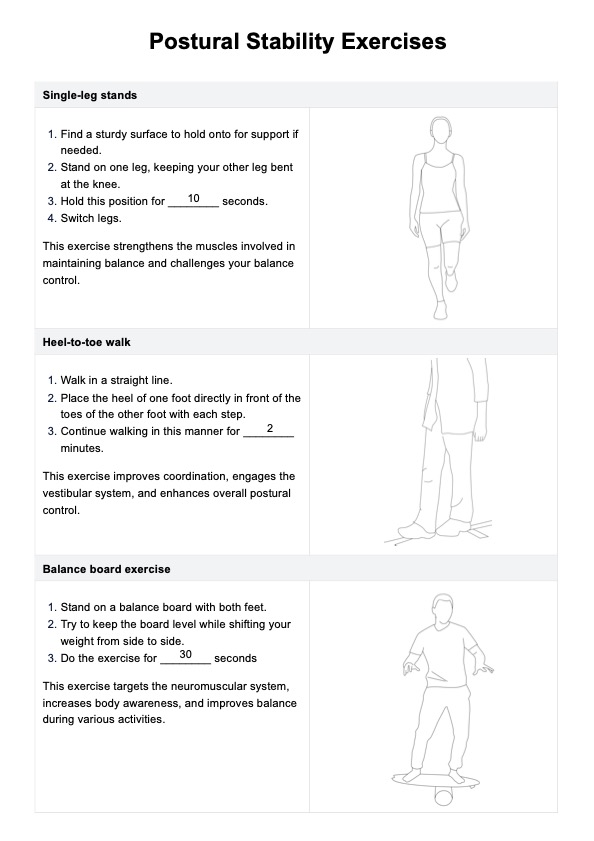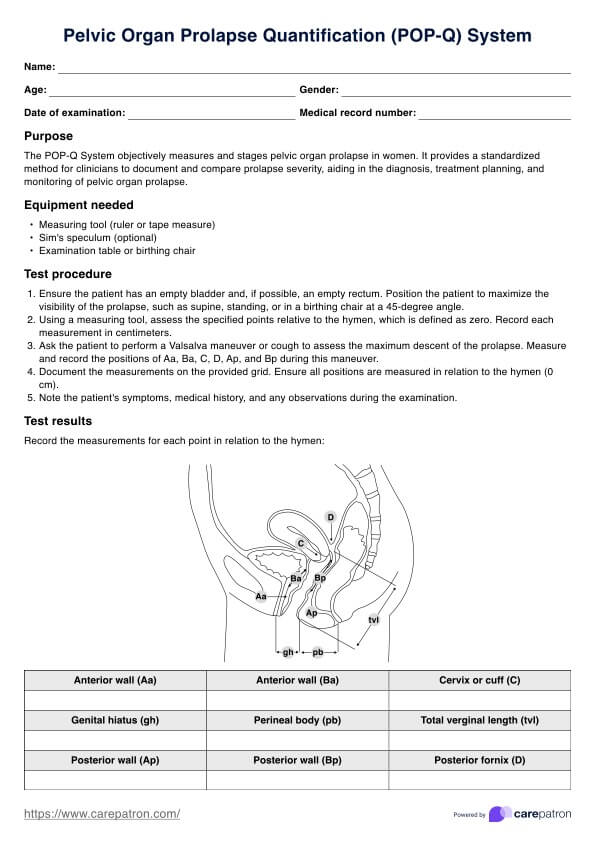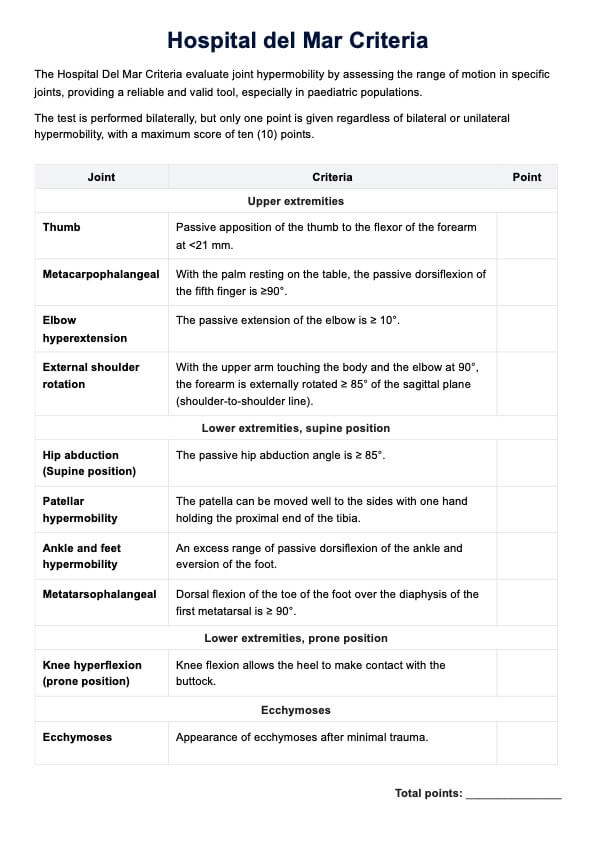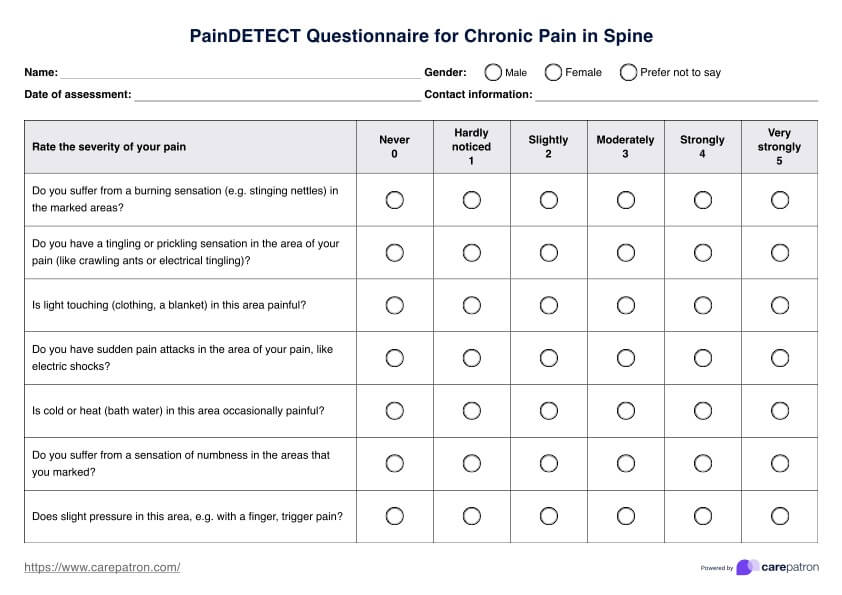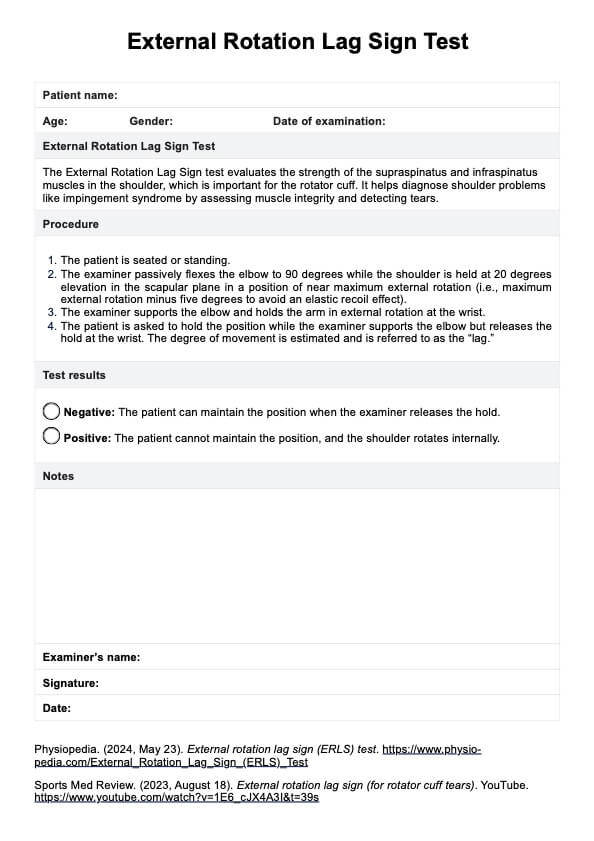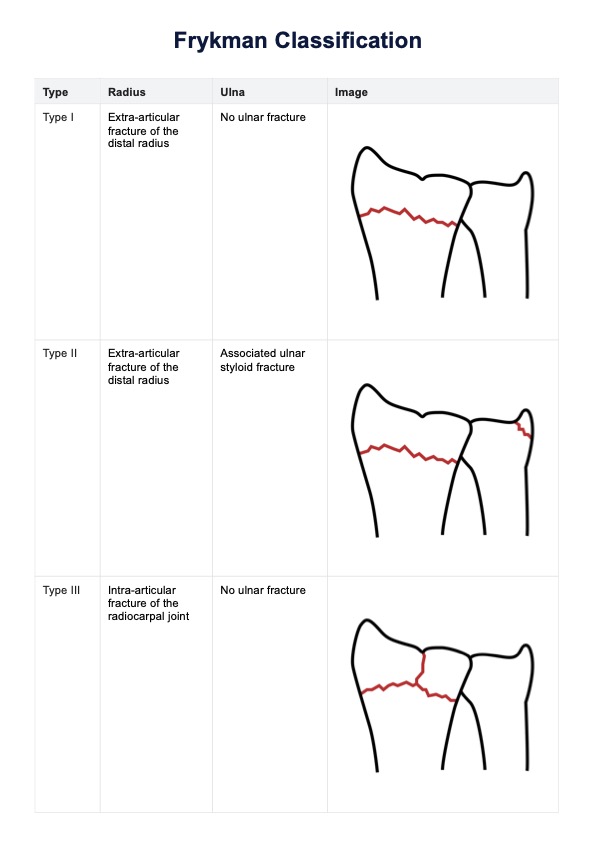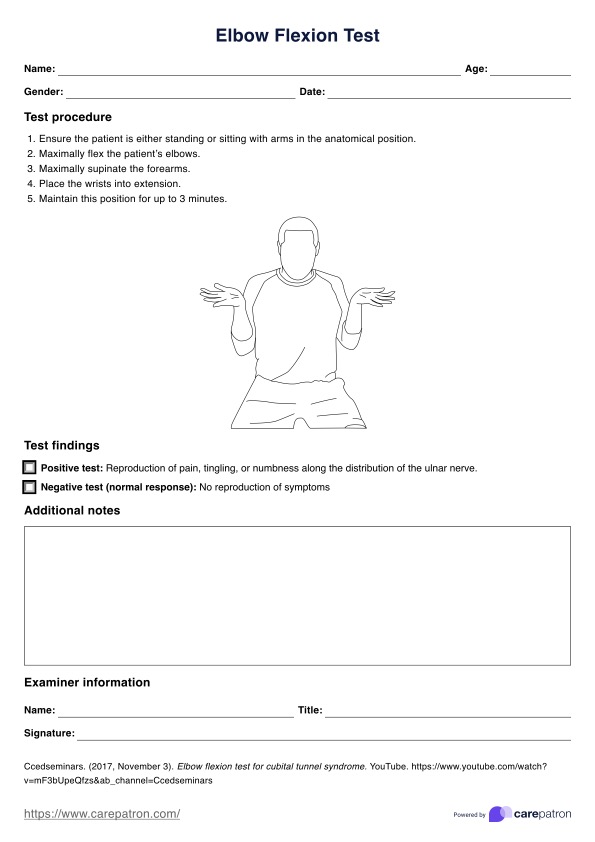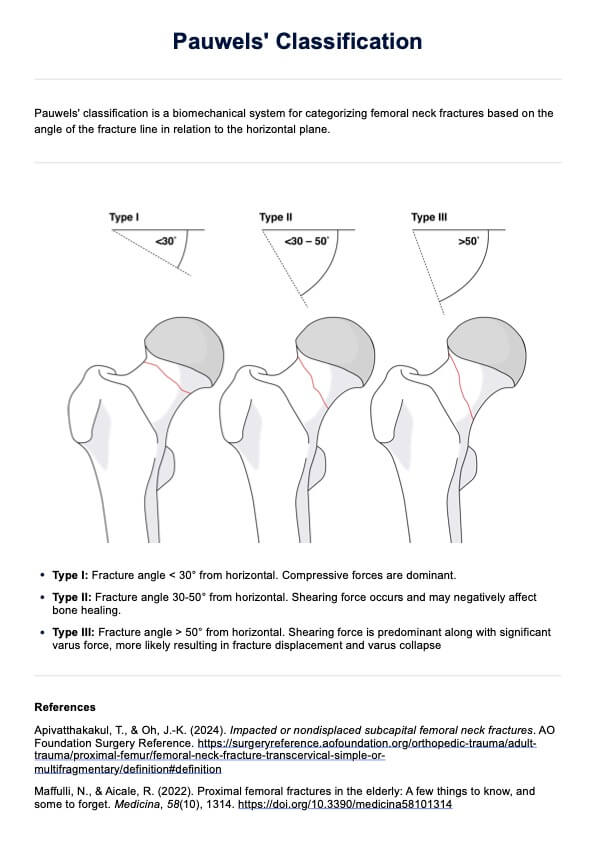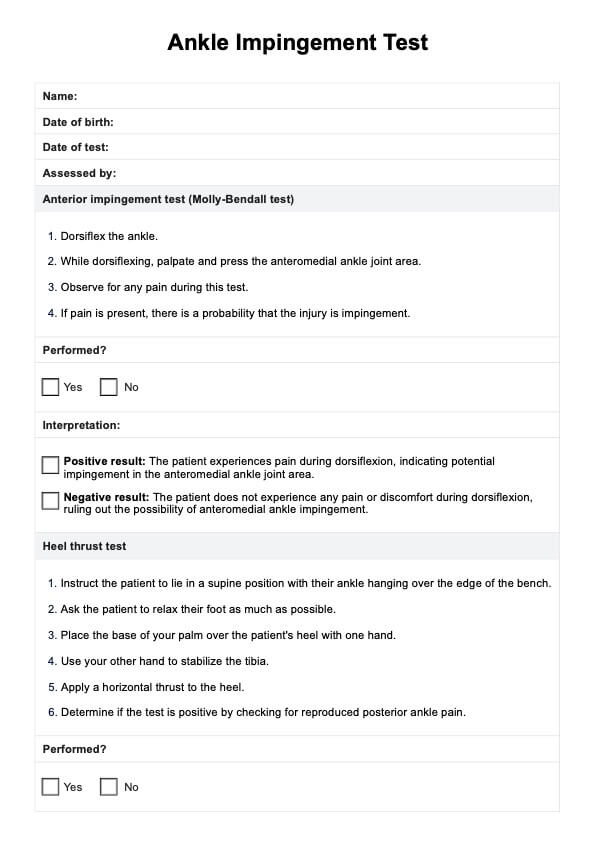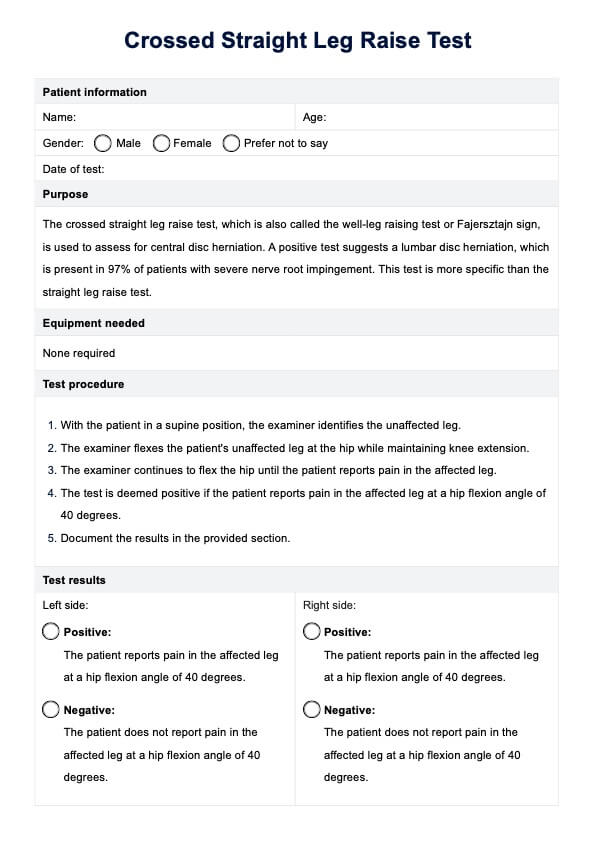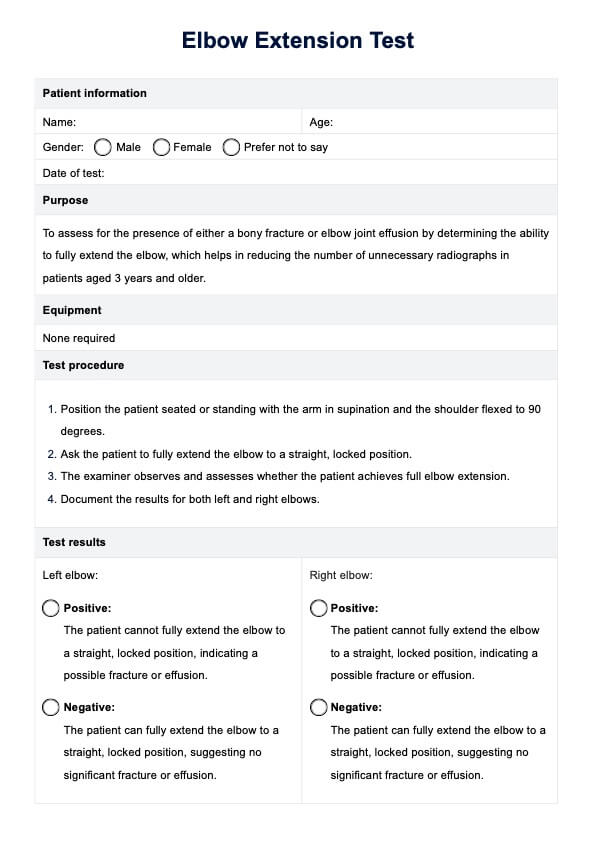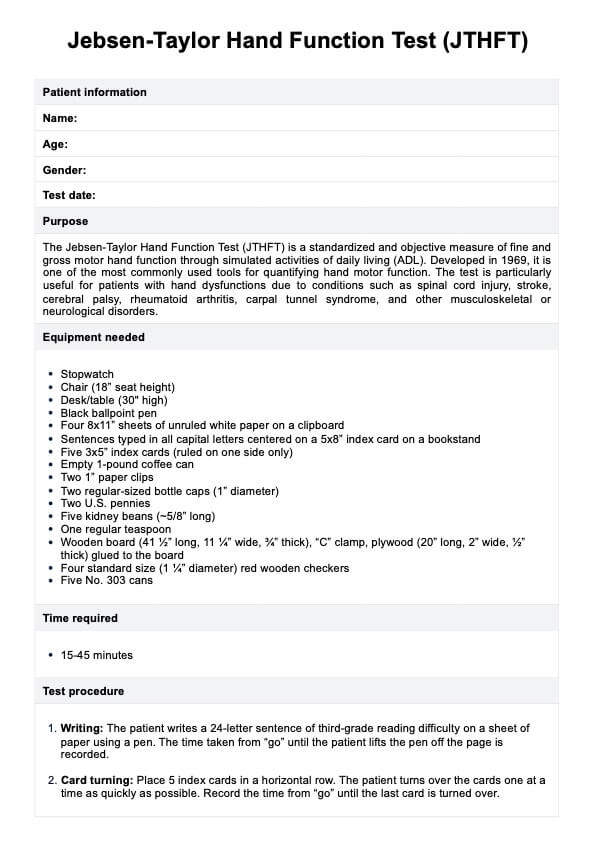Postural Stability Exercises
Improve your postural stability with these helpful exercises. Download our free PDF for a handout and examples of effective postural stability exercises.


Importance of Postural Stability Exercises
Postural stability exercises are essential for enhancing the body’s ability to maintain balance control against gravity. This involves both static and dynamic balance, allowing individuals to perform daily activities such as sitting at a desk, walking, and engaging in sports with confidence. A well-functioning postural control system is crucial for preventing increased risk of postural instability, as factors contribute to falls and injuries. These exercises strengthen the core muscle mass and improve overall balance ability, directly impacting functional skills.
Balance training helps individuals develop better dynamic balance control, crucial for activities that require quick movements and changes in direction. Additionally, it supports the vestibular system, which plays a vital role in spatial orientation and balance. Improved postural stability can also reduce postural sway, which is the natural movement of the body while trying to maintain balance. This is particularly important for individuals experiencing conditions such as benign paroxysmal positional vertigo, where balance is significantly affected.
Postural Stability Exercises Template
Postural Stability Exercises Example
5 exercises to improve postural control
Improving postural control is essential for enhancing overall balance and reducing the risk of falls. A variety of balance exercises can effectively target the core muscles and other related systems to promote better balance. These balance exercises engage the sensory systems, central nervous system, and neuromuscular system to work together seamlessly.
Single-leg stands
This exercise focuses on keeping balance while standing on one leg. To perform this exercise, find a sturdy surface to hold onto for support if needed. Stand on one leg, keeping your other leg bent at the knee. Hold this standing position for 10 to 30 seconds, then switch legs. This simple postural task strengthens the muscles involved in maintaining balance and challenges your balance control.
Heel-to-toe walk
The heel-to-toe walk improves coordination and balance control. To do this exercise, walk in a straight line by placing the heel of one foot directly in front of the toes of the other foot with each step. This exercise encourages engagement of the vestibular system and enhances overall postural control.
Balance board exercise
Using a balance board helps to challenge your balance training effectively. Stand on the board with both feet and try to keep it level while shifting your weight from side to side. This exercise targets the neuromuscular system and increases your body awareness, improving your ability to keep balance during various activities.
Chair stand
This strength training exercise helps to build muscle strength while improving postural control. Sit in a sturdy chair with your feet flat on the ground. Stand up without using your hands for support and sit back down. Repeat this exercise 10 to 15 times. This movement reinforces leg strength and enhances the ability to perform postural tasks safely.
Wall slides
To perform wall slides, start by standing with your back against a wall, feet shoulder-width apart. Slowly slide down into a squat position while keeping your back pressed against the wall. Hold the squat for the desired amount of time, then slide back up to the starting position. This exercise engages your core, improves postural stability, and enhances shoulder mobility.
How to use our Postural Stability Exercises Handout?
Utilizing the Postural Stability Exercises Handout is an effective way to enhance your understanding and practice of postural stability exercises. This handout provides valuable information and guidance on exercises designed to improve balance and stability. Follow these steps to make the most of the resources provided.
Access and download the handout
The quickest way to get started is to click "Use template." It will open the template on the Carepatron app's Resource Library. You can also click "Download" to save a printable but non-customizable version of the template on your device.
Review the handout and exercises
Once you have downloaded the handout, take the time to thoroughly review its contents. Familiarize yourself with each exercise, paying attention to the instructions and safety tips provided. Understanding the purpose and execution of each exercise will help you achieve optimal results in your postural stability training.
Introduce and educate the patient with the handout
If you’re a healthcare practitioner, introduce the handout to your patients during consultations. Use it as a teaching tool to explain the importance of postural stability and how these exercises can benefit their overall balance. Encourage patients to ask questions and express any concerns they may have regarding the exercises.
How do professionals benefit from using this handout?
Healthcare professionals can significantly enhance their practice by utilizing the Postural Stability Exercises Handout. This resource serves as a comprehensive guide, offering structured exercises that promote postural control and balance for patients.
Additionally, the handout serves as an educational tool, enabling professionals to explain the importance of postural stability to patients effectively. This fosters better patient engagement and compliance with prescribed exercises. It also helps patients undergoing through physical therapy stay consistent and lets them do exercises at home.
Moreover, the standardized format of the handout ensures that practitioners deliver consistent and accurate information, making it easier to track progress over time. Overall, using this handout not only streamlines the rehabilitation process but also empowers healthcare providers to enhance the quality of care they offer.
Commonly asked questions
To stabilize posture, focus on strengthening the core muscles, which provide support for the spine and pelvis. Additionally, practice maintaining proper alignment while sitting, standing, and moving to improve overall postural control.
Yes, it is possible to correct years of bad posture through consistent practice of postural stability exercises and awareness of body mechanics. However, it may take time and effort to retrain the muscles and habits associated with poor posture.
Exercises that strengthen the core, back, and shoulder muscles, such as planks, bridges, and rows, are particularly effective for improving posture. Incorporating stretches for the chest and hip flexors can also help counteract the effects of poor posture.
While postural stability and balance are related, they are not the same. Postural stability refers to the ability to maintain a controlled position against gravity, whereas balance encompasses the ability to maintain stability during movement and changes in position.



